10+ Sample Executive Budget Proposal
-
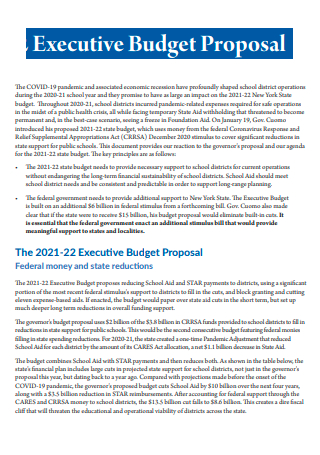
Executive Budget Proposal Template
download now -
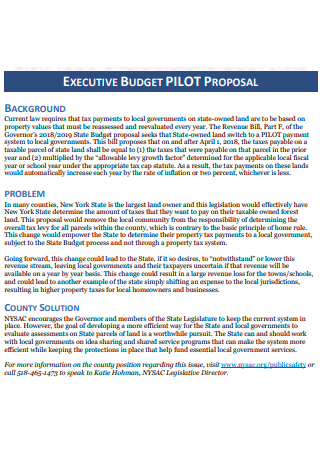
Executive Budget Pilot Proposal
download now -
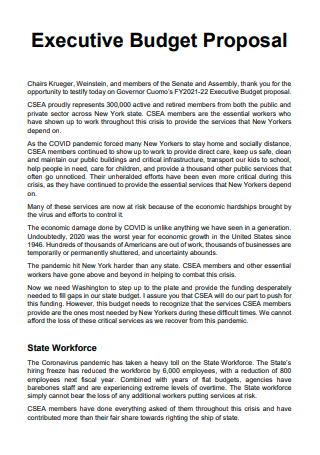
Executive Budget Proposal Example
download now -
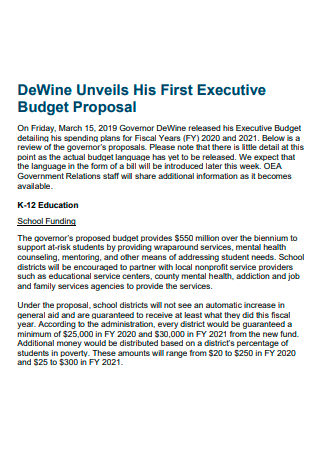
Standard Executive Budget Proposal
download now -
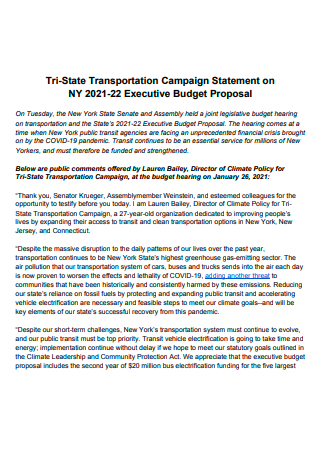
Printable Executive Budget Proposal
download now -
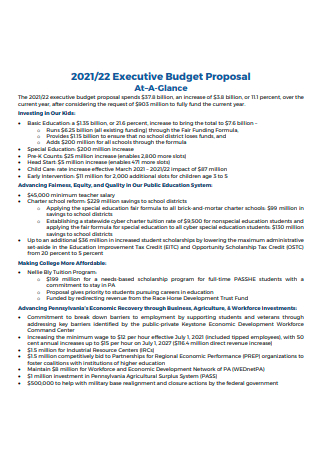
Executive Budget Proposal in PDF
download now -
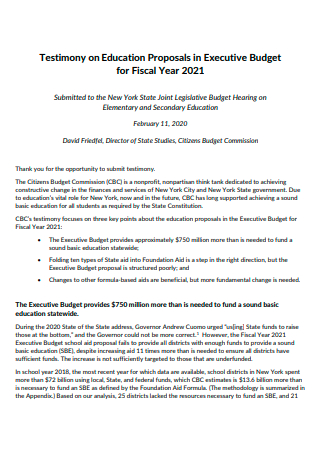
Executive Budget Education Proposal
download now -
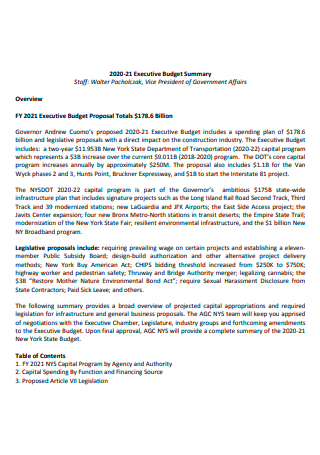
Executive Budget Summary Proposal
download now -
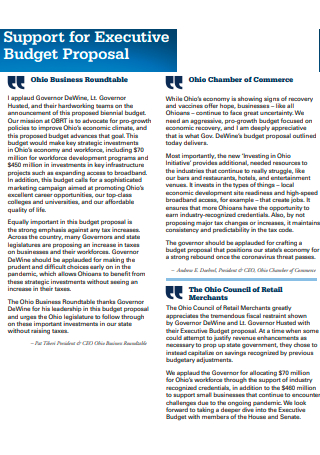
Formal Executive Budget Proposal
download now -
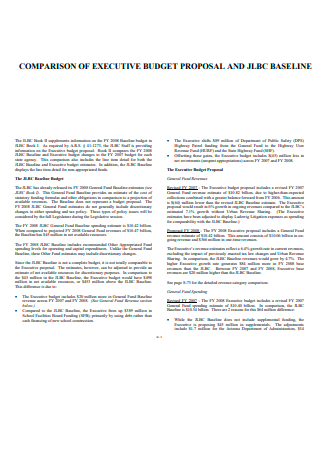
Comparision of Executive Budget Proposal and Baseline
download now -
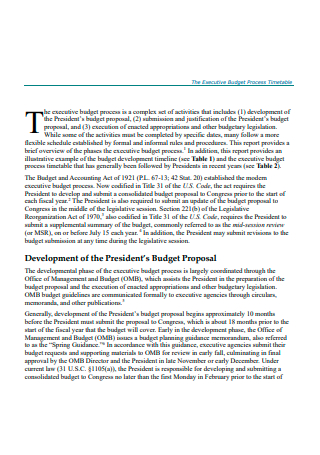
Executive Budget Process Proposal
download now
FREE Executive Budget Proposal s to Download
10+ Sample Executive Budget Proposal
What is an Executive Budget Proposal?
Different Types of Executive Budget Proposals
Essential Components of an Executive Budget Proposal
How to Write an Executive Budget Proposal
FAQs
What is the executive budget process?
What are the primary stages of budget development?
What are some examples of an executive budget proposal?
How to plan a budget?
What are the most common budgeting methods?
What is an Executive Budget Proposal?
An executive budget proposal is a clear and engaging proposal that provides short-term and long-term goals and objectives in the executive financial budget plan for the executive and legislative branches, as well as setting budget negotiations on how to initiate and limit spending and fund various activities such as borrowed resources, revenue accounts, extrabudgetary mechanisms, contingency funds, multiple funds, and special funds. It is a useful tool to inform and explain the financial needs of the city, municipality, region, or state to the government agencies in providing the administration and departments with a specific budget for the succeeding fiscal year. It is written and submitted to clarify the priorities of the government based on the new policies to be accommodated and any changes in current policy provisions.
According to a forecast review of the enacted budget in 2021-2022, the Division of Budget projected the national gross domestic product would decline by 5.7%, while the actual decline was 3.5%. The chart has shown that the forecast underestimated the negative impact of the COVID-19 pandemic in the first half of 2020 and the timing and strength of the rebound. Also, the national economy advanced to 33.4% in the third quarter of 2020, compared to the prior forecast of an 8% decline. Due to the historic influx of resources such as federal aid and improved tax collections, the executive budget in 2021 is prepared accordingly since the updated state financial plan. That’s why preparing an effective executive budget proposal is important for government sectors and departments to assess their financial needs and propose an annual budget plan to support their needs to boost economic development and performance.
Different Types of Executive Budget Proposals
The Office of Management and Budget and executive agencies have significant roles in the development and execution of executive budget plans and proposals. If you are one of the individuals in the executive branch responsible for the execution of the budget, consider what type of executive budget proposal you will use for the budget planning and preparation.
1. Executive Budget Education Proposal
An executive budget education proposal is a budget proposal written and submitted to the state joint legislative budget hearing concerning elementary and secondary education. It highlights the key points about the education and academic project proposals in the executive budget for the upcoming year. For example, a nonprofit organization prepares an education budget proposal to fully support all students in the states in achieving a sound basic education. Specify the main goals and objectives of the budget proposal like providing a certain amount of budget more than is necessary to fund basic education around the state. Create a well-structured executive budget education proposal to provide all districts with sufficient funds to offer a quality basic education.
2. Executive Budget Summary Proposal
Make a well-coordinated executive budget summary proposal along with a building project proposal to include a spending plan and legislative proposals with a solid impact on the construction industry. Describe the programs included in the executive budget and how the capital programs will help in developing a more than $100 billion state-wide infrastructure plan. Add some details on the wage requirements, design-build authorization, and other alternative project delivery methods. Also, provide an extensive overview of projected capital appropriations and required legislation for infrastructure and other general business proposals including capital spending by function and financing source.
3. Governor’s Budget Proposal for Environmental Conservation
A governor’s budget proposal for environmental conservation is a persuasive environmental project proposal that points out a proposed amount in expenditures from different sources such as the general fund, special funds, bond funds, and federal funds to support environmental conservation programs administered by environmental protection agencies. It may also contain a proposed budget to organize activities with the intention to reduce greenhouse gas emissions. Some examples of environmental protection programs funded through executive budget proposals are Beverage Container Recycling Program and Timber Harvest And Forestry Program.
4. President’s Budget Proposal
The Congressional Research Service published an overview regarding the process of the President’s executive budget. They defined the President’s budget proposal as a document that explains the policy priorities with a unified plan for the allocation of federal budget resources. It contains some recommendations for the development of the executive budget to sustain government function and shape worthwhile policy decisions.
Essential Components of an Executive Budget Proposal
The process of budget planning and preparation involves writing a budget proposal, seeking and coordinating requests from state government agencies, developing a cohesive plan of proposed expenditures, and submission of the budget plan to the legislature. A comprehensive and well-balanced executive budget proposal is developed and prepared by the executive, which the legislature changes and executes into law. Take note of the essential components that should be in an executive budget proposal.
How to Write an Executive Budget Proposal
The submission of an executive budget proposal is commonly comprised of a multiple-volume set of printed and electronic documents that vary in size and composition depending on the administration. If you are having a hard time developing an executive budget proposal, there is a wide array of executive budget proposal templates available on our website. Consider these steps when preparing this document for your budgeting plans.
Step 1: Create an Executive Summary
Summarize the major details of the executive budget such as the amount of the budget, purpose, main goals and objectives, problems or needs, solutions, and priorities of the state or government to support the mission of agencies and institutions. Define the main points of the planned program activities and associated resource requirements for the fiscal year.
Step 2: Include a Statement of Need
Outline the needs of the people in the state or the communities overall. Write an informative statement of need as you specify the problems to be solved in the communities and state and how the government sector can provide the solution with the execution of state-wide programs. For example, if you are planning to organize environmental conservation and economic development programs, outline in the budget proposal how it will make a meaningful difference in the lives of all the people in the communities that often bear the burden of air and water pollution.
Step 3: State Main Goals and Objectives
Define the main goals and objectives of the executive budget proposal and plan. Supplement the goals and objectives with the financial plan, economic outlook, and revenue. Use some charts and tables to demonstrate the comparison of selected economic indicators of various states. Indicate the right amounts and figures based on the collected data.
Step 4: Describe the Areas of Expenditure
Elaborate on the primary areas of expenditure for a specific government agency or department. For example, the executive health budget proposal indicates the proposed medical spending in multi-year initiatives for the improvement of the state’s health care system such as $3.1 billion in wage increases and bonuses for health care and mental hygiene workers, $2.4 billion in capital funding for health care facilities statewide, and $500 million for cost-of-living adjustments for medical service workers.
Step 5: Show Accuracy and Clarity
While explaining the primary areas of expenditure of the executive budget proposal, write with accuracy and clarity. Make sure to indicate the appropriate figures, numbers, and percentage rates. If you are preparing an executive budget proposal for education, indicate the increase needed for the next school year and describe different categorical and competitive grants precisely.
Step 6: Prepare the Final Executive Budget Proposal
Read the draft of your executive budget proposal and analyze it for any possible grammatical and spelling errors. Include all essential details that must be enclosed in the proposal. Proofread, edit and revise the document carefully if necessary. Lastly, prepare the final executive budget proposal.
FAQs
The executive budget process is composed of three main stages: development of the executive budget proposal, submission and justification of the executive budget proposal, and the proper execution of constitutional annual budget allotments and other budget legislation.
The primary stages of budget development are the initial processes, data accumulation and authorization, budget composition, budget printing, and budget presentation. The initial processes are preliminary tasks of preparing essential instructions and guidelines to departments and documents of financial expenditures and receipts during the current and past fiscal year, as well as the financial requirements for the upcoming fiscal year. Data accumulation and authorization is a vital process performed by the top officials in the departments to scrutinize the data and estimates provided by ground-level officials and the evaluated data are sent for another analysis by the Finance Ministry. Budget composition is a stage when the Finance Ministry allocates revenues to many administrative ministries.
Some examples of an executive budget proposal are an executive budget education proposal, an executive budget summary proposal, a formal executive budget proposal, an executive budget process proposal, a printable executive budget proposal, a standard executive budget proposal, an executive budget pilot proposal, a president’s budget proposal, a governor’s budget proposal, and a state executive budget proposal.
When you plan a budget, you need to consider and figure out your income or monthly earnings which includes your salary, government benefits, interest from saving accounts, dividends from investments, and capital gains. Then, list your expenses each month which include rent or mortgage payments, utility bills, groceries, gas or public transportation, credit card bills and other debt payments, and entertainment subscriptions. Next, calculate your balance and follow the 50/30/20 rule (Essentials – 50%, Wants – 30%, Savings – 20%). Specify your short-term and long-term financial goals and objectives. Develop an effective budget plan and budget spreadsheet and stay on track with your budget.
The most common budgeting methods are incremental budgeting, zero-based budgeting, rolling or continuous budgeting, activity-based budgeting, and performance-based budgeting. Incremental budgeting is a type of budgeting that applies adjustments to the preceding periods to standardize and ensure continuity or a steady flow of funds. A zero-based budget worksheet focuses on improving accuracy, increasing efficiency, optimizing resource allocation, aligning with business objectives, and fostering congruence. Activity-based budgeting is when you calculate the total cost required to reach the target of the expected level of activities by enhancing efficiency, managing costs, and eliminating redundancy. Performance-based budgeting is an advanced budgeting method that aims on associating budgets or funds with definite objectives to assign clear ownership and prioritize key activities.
What is the executive budget process?
What are the primary stages of budget development?
What are some examples of an executive budget proposal?
How to plan a budget?
What are the most common budgeting methods?
A goal-driven approach to budgeting involves careful planning, development, adoption, and execution stages of the budget. Whether you are creating an executive budget proposal for environmental conservation, economic development, or education, it is integral for your work when you use a systematic and well-designed executive budget proposal template. We have sample executive budget proposal templates on our website such as executive budget process proposal templates, printable expense budget proposal templates, standard executive budget proposal templates, executive budget pilot proposal templates, president’s budget proposal templates, and governor’s budget proposal templates.
